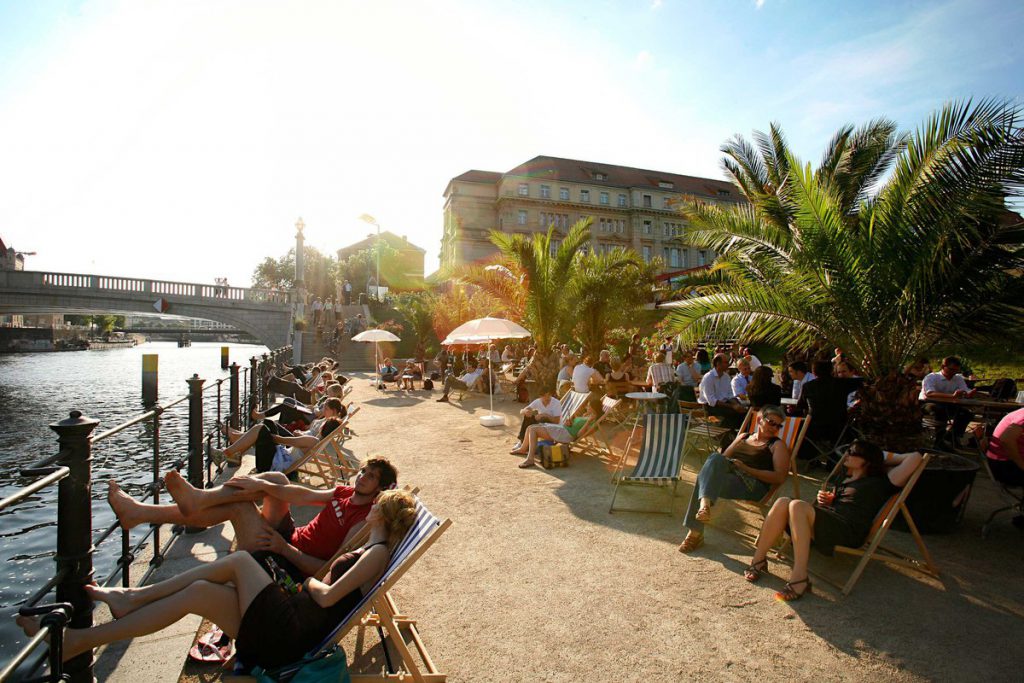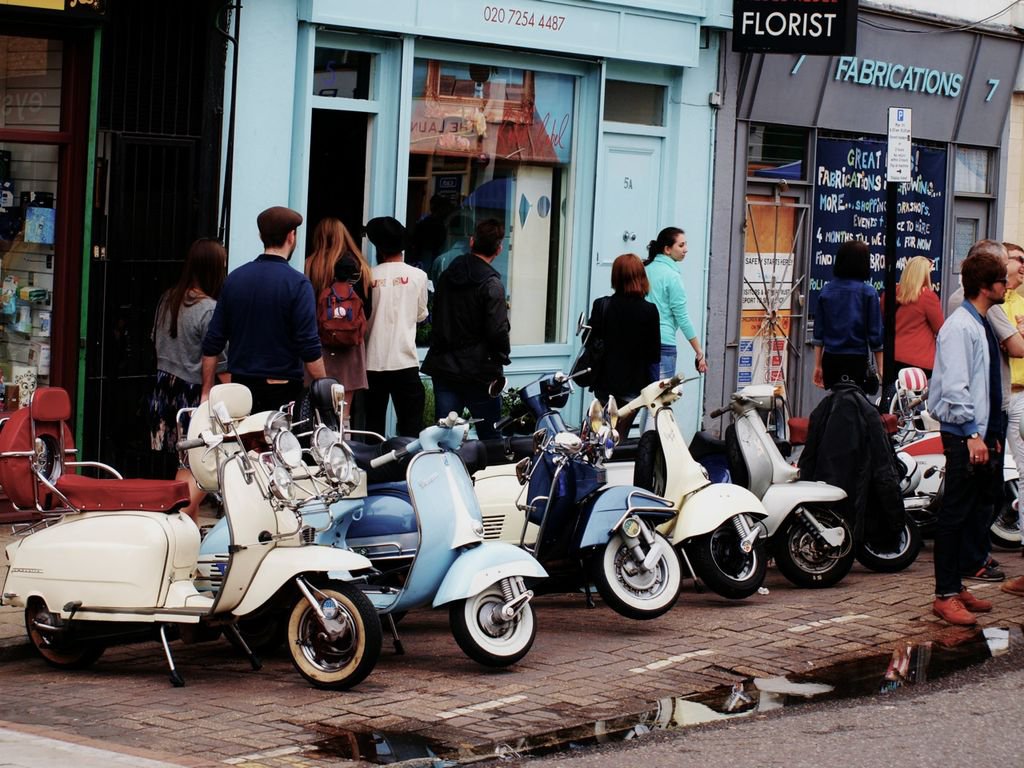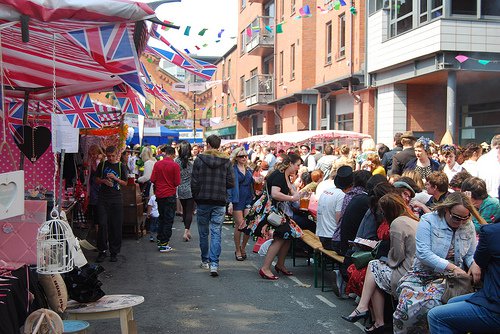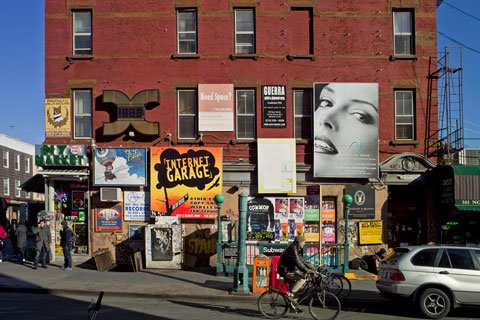In 2015 we continued to discuss and document our positivity about the evolution of town centres, as a more indie and experiential spirit started to replace the dinosaurs that continued to fail and cease trading.

I have “mouthed off” pretty regularly these last few years about the future of our high streets – one recurrent thought that I am having is “is it time to consign the term high street to history and to just talk about town centres?”
Many of us have started to associate the term “high street” with chain stores and mass, uniform consumption, all terms that do not have very positive connotations. Is the term “high street “therefore not simply outmoded and a product of some human thinking and extreme behaviour that we are learning to correct and temper?
At a time when “human scale” “bespoke”, “conviviality”, “making”, “fresh”, “inspiring”, “craft” are the concepts being embraced by a young generation, who are having to deal with an economic landscape bequeathed by a couple of short-sighted generations before them, does “high street” really still work?
Where are the most desirable places to hang out? They are rarely classed as “high streets” but rather, more eclectic, less corporate parts of our towns and cities like, Manchester’s Northern Quarter, London’s Broadway Market, the Mitte in Berlin, and Williamsburg in New York and nascent areas like The Old Town in Margate and The Baltic Quarter of Liverpool.What they all are, is a part of our wider, more vibrant community “town centres”. These are the type of locations where people have traditionally gathered to discuss and debate, meet folk, trade and do what most of us love to do, watch the world go by and watch others go about their business. It’s pretty obvious if you have a place where people can linger and hang out then they will open their wallets. It has ever been thus. When my friends and I saw David Bowie on his Ziggy Stardust tour at Blackburn King Georges Hall in 1973, the next day we were in The Blue Dahlia on the Boulevard discussing what we had just witnessed over a plate of pie and gravy, then in Ames Record Bar in the Arndale buying his records, then in Clobber buying a pair of canary yellow high waisted “bags” and then it was time for a feather cut.

Does the “retail business” need to be rows of chain stores, often selling something not that different from another chain store 50 metres away and often offering us no connection to the provenance of what they are selling? What happened to the bookshops where you could spend hours, drinking coffee and watching the world go by or the artisanal family shop, where skills of craft are passed down through the generations?
I know that critics will again have a go at what I am saying, arguing that this is a middle class view of the world, that it’s the view of a hipster (well I am far too old to be classed as a hipster!…And isn’t it about time that those cynics stopped knocking people who are trying to do things differently?)
I like to think that I still understand the value of bespoke. Gerardine and started with nothing – Red or Dead started on a market stall, and under our ownership it remained devoutly “indie” and was nothing but serendipitous. We always sought out and took risks (albeit low cost ones) on up and coming areas and didn’t set out to “displace the indigenous population” as we opened in offbeat areas of London (yes Neal Street, Rupert St and the like was offbeat in the early 80s), Manchester, Leeds, Bristol, Copenhagen, Tokyo, Hong Kong, Vancouver etc.

At Red or Dead we experienced at close quarters the battle that “indies” have with trying to get retail outlets in high trafficked locations. We were turned down by countless investors who had snapped up town centre commercial properties and would only lease them to retailers like Next, and Oasis with large covenants (replace that with corporate structures and large overdrafts!)
So many “high streets”, which are there to serve us all, are now owned a select few wealthy investment firms – and believe it or not those are often backed by our pension funds. The sad fact is that these investment ‘vehicles’ would rather keep their empty units, YES EMPTY, and maintain the “book value” of these units rather than rent them to someone outdated dinosaur who can’t afford the inflated rents that the likes of Jessop’s, Woolworths, Zavi and Blockbuster were paying. And look where it got them. Good riddance!

Town centres could be so much more than high streets full of chain stores, empty units, money lenders and betting shops prising money from the financially most vulnerable. Who wants our cities and towns blighted by empty run down shops? Surely we can accept that in some cases the “book value” of the stores is a thing of the past, and that if the real market value were applied to them then we might get back a town centre that was interesting? Yes it would hurt some investors and maybe even a pension fund or two in the short term…but seeing as it’s our generation, who will cash out of the pension pot first and who left a relatively bleak landscape for the generation below them, perhaps it’s the least we could do.
But things have slowly be changing – I have to take my hat off to British Land and the Crown Estate who have backed the PopUp Britain campaign in 2014 – giving access to otherwise empty ‘town centre’ premises to British retail start-ups. More dynamic councils up and down the country have started to experiment. One initiative that I am involved with in the town I grew up in, is Blackburn is Open, and it is having a positive impact with some impressive stats to back it up. Liverpool Council are simply brilliant. They invest in free, enormous arts led events that bring millions of visitors to the city centre (Liverpool has gone from the 15th most visited city in the UK to the 5th in just 7 years) and retailers support them. Why wouldn’t they?
It may just be an unreachable dream, but just think of how attractive and interesting a regenerated town centre could be if it were to contain all those interesting trades and makers that formed part of the vibrancy in the past. Add to the “baker the butcher, the candlestick maker” a graphic designer going about his or her business and offering as an aside a bespoke birthday card service. Wouldn’t it be great to watch a craftsman making a chair or architects at their drawing boards? It might just inspire a generation that making and creating stuff is a real option.
So let’s let go of the term “high street” and celebrate town centres, places where people get together to enjoy being together and seeing what people get up to. It’s not as if this has not always been the case from the Roman forum to London’s Southbank Centre; places of human discourse with shopping, entertainment and food and drink thrown in, work.